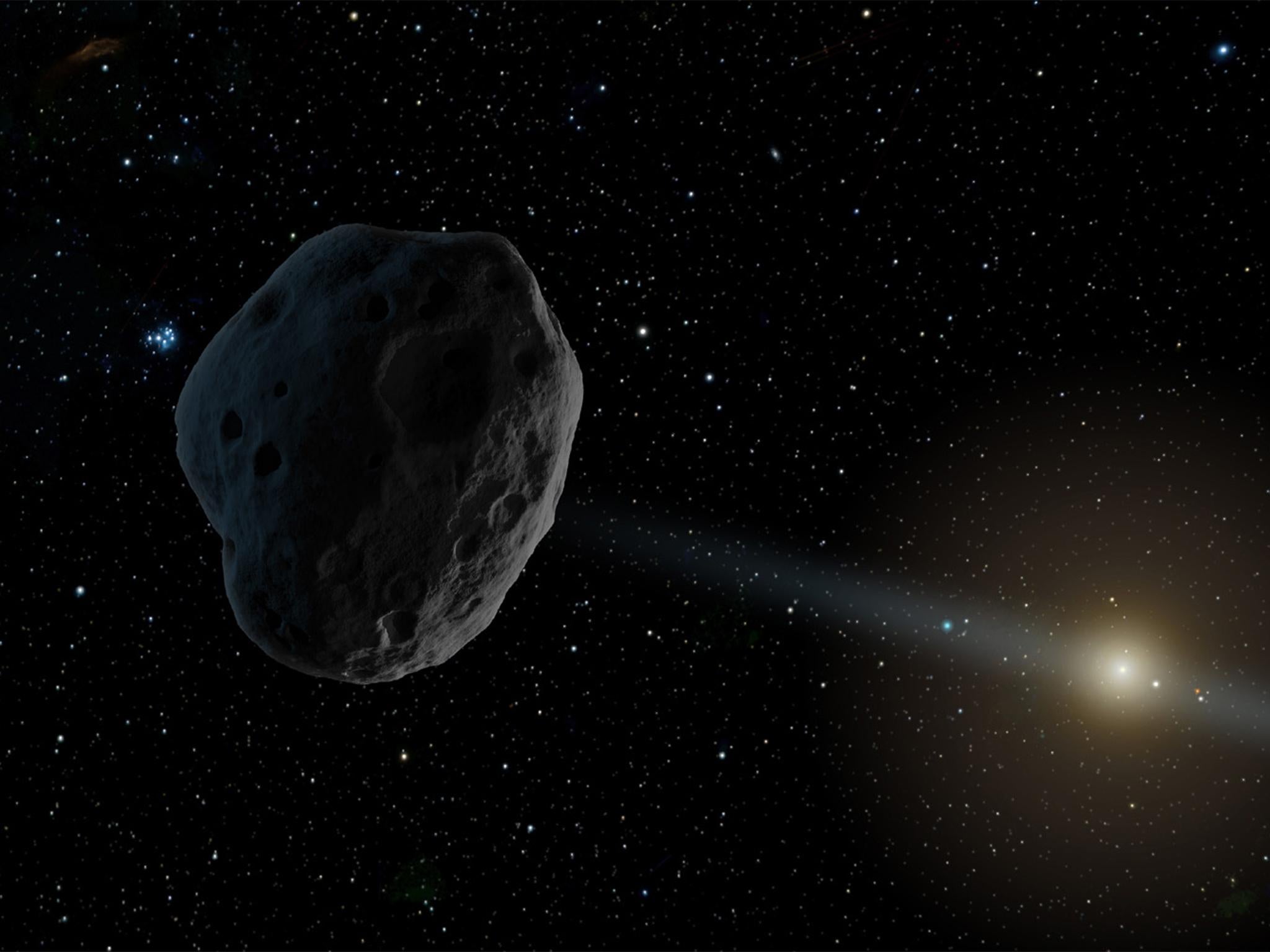Rare comet set to be visible from Earth for first time
Newly-discovered comet C/2016 U1 has an orbit that takes millions of years - meaning this might be the only time it can be spotted without a telescope

A rare comet is set to be visible from Earth for the first time in what could be millions of years, Nasa has announced.
The comet, named C/2016 U1 NEOWISE, will be close enough to Earth between now and 14 January to potentially be seen in the night sky with binoculars or even the naked eye.
C/2016 U1 was first detected by Nasa in October and is currently heading past Earth on its way towards the sun, where it will pass through the orbit of Mercury before heading back to the outer Solar System.
Paul Chodas, manager of Nasa’s Centre for Near-Earth Object (NEO) Studies, said: "[C/2016 U1] has a good chance of becoming visible through a good pair of binoculars, although we can't be sure because a comet's brightness is notoriously unpredictable."
The best chance of seeing the comet is to look in the south-eastern sky just before dawn. The comet will be seen further south every day until it disappears from sight sometime in mid-January.
C/2016 U1 has an orbit that could take millions of years, meaning this could be the first and last time it gets so close to Earth. Comets typically only have a lifespan of one or two million years.
But while it is likely to be comparatively near to us, the comet is still many millions of miles away and poses no threat to the planet.
WF9 is believed to be tenth comet discovered by Nasa’s Neowise mission since it was re-started in 2013. The researchers have also discovered 99 new asteroids.
Scientists are not entirely sure whether to class C/2016 U1 as a comet or an asteroid, but believe it is more likely to be a comet.
Nasa has discovered two potential comets in recent weeks. As well as C/2016 U1, it announced the discovery of an object it is calling 2016 WF9. This appears to be something between a comet and an asteroid but scientists have not been able to establish which category it falls into. Typically asteroids are made of rock and metals whereas comets also consist of ice.
As comets and asteroids go, WF9 is big – up to one kilometre across. It is also very dark, reflecting only a tiny proportion of the light that fall on it. Scientists compared the comet’s surface to charcoal or tarmac in how little light it reflects.
Join our commenting forum
Join thought-provoking conversations, follow other Independent readers and see their replies
Comments